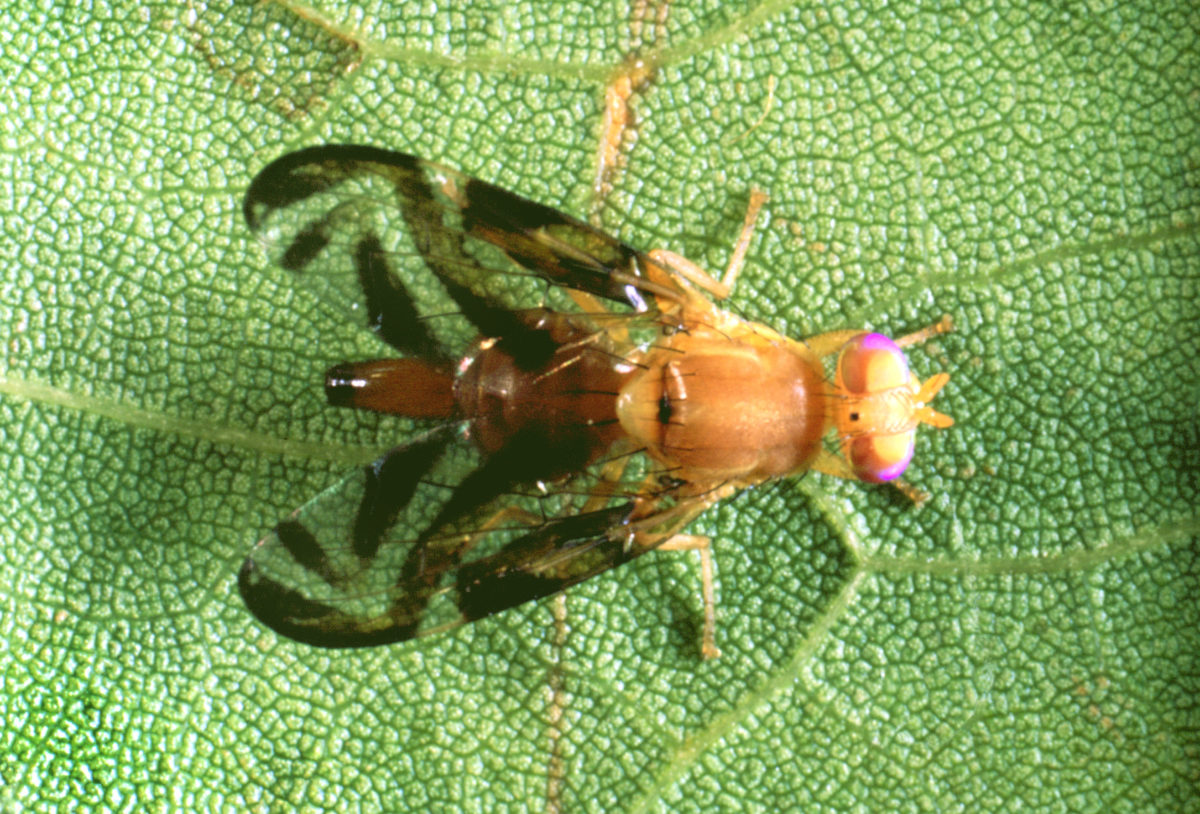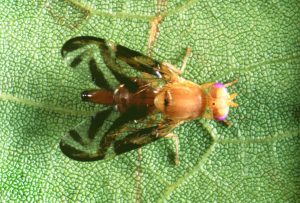Cory Penca, an entomology Ph.D. candidate and a student in the Doctor of Plant Medicine program at the University of Florida, gave a presentation at the recent Stone Fruit Field Day on managing key pests of peaches in Florida. One of the many pests he discussed was the Caribbean fruit fly.
Caribbean fruit fly is specifically a Florida issue as far as peaches are concerned. This pest tends to be a problem later in the season, at harvest and late into harvest. These flies are a problem at this time because they need warmer temperatures. Caribbean fruit flies will move to the coast and southwards during the winter, where they survive and avoid hard freezes.
As the weather starts to heat up during the spring, the pest starts to move inland and lay eggs in fruit as it is ripening. Those eggs develop into maggots that feed on the fruit. Penca said this is more of a problem in u-pick operations because the fruit is allowed to get softer on the trees. Customers typically want to pick fruit when it is ripe on the tree rather than hard.
The Florida Department of Agriculture and Consumer Services has a program in which it monitors orchards for Caribbean fruit flies. The program is designed to allow peach exports to certain markets. “For instance, Texas doesn’t want to receive fruit with Caribbean fruit flies … so we have to certify that they are fruit-fly free,” said Penca.
One way to monitor for Caribbean fruit flies is to look for signs of egg-laying, which results in a clear sap coming out of the fruit. However, Penca believes the best way to monitor for Caribbean fruit flies is to use traps. “There are different fruit fly traps available. For Caribbean fruit fly, you want to use torula yeast as a bait mixed with water in the trap,” said Penca. “This will start to ferment and produce odors that are attractive to the fruit flies. The fruit flies are looking for a protein source. The females need protein for their egg development … Distributing these traps out in the orchard can give you an idea if the fruit fly is present.”
The traps not only catch fruit flies, but other flies, including vinegar flies, which are much smaller than the Caribbean fruit flies. “It’s important that growers don’t spray for those tiny vinegar flies because they aren’t causing problems. You need to be able to identify the Caribbean fruit fly as a different problem than the other fruit flies,” says Penca.
For management of Caribbean fruit flies, because growers are spraying around harvest when the pest is the biggest problem, they need a low pre-harvest interval. “There are a couple options available,” said Penca. “One of the most commonly used is a product called GF-120. This is an organic pesticide called spinosad, which is a product of a fungus, and it is mixed with a bait solution. This bait solution attracts the fruit fly, and the fruit fly will lap up some of this pesticide with the bait in it, and that will kill the fruit fly.”
Share this Post











